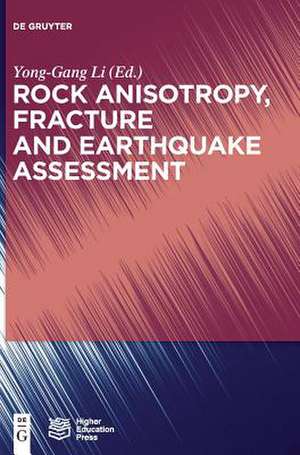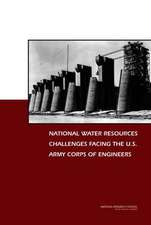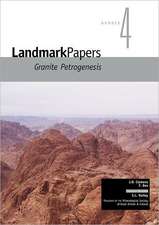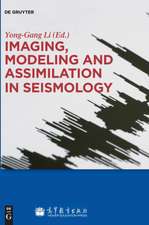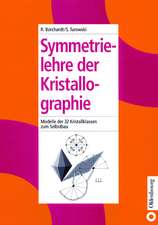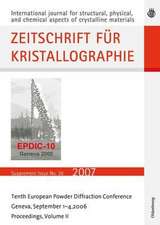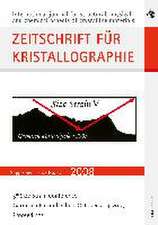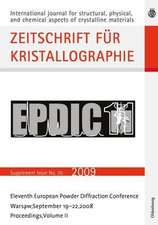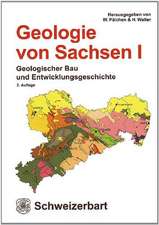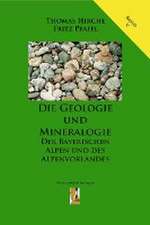Seismic Wave Anisotropy in Fractured Rock
Editat de Yonggang Lien Limba Engleză Hardback – 10 apr 2016
Preț: 1266.98 lei
Preț vechi: 1645.43 lei
-23% Nou
242.44€ • 253.64$ • 201.39£
Carte tipărită la comandă
Livrare economică 02-16 aprilie
Specificații
ISBN-10: 3110440709
Pagini: 292
Ilustrații: 130 schw.-w. Abb.
Dimensiuni: 170 x 240 mm
Greutate: 0.66 kg
Editura: De Gruyter
Colecția De Gruyter
Locul publicării:Berlin/Boston
Notă biografică
Yonggang Li, University of Southern California, Los Angeles, USA
Cuprins
Table of content:
Chapter 1 Seismic Wave Propagation in Anisotropic Rocks with Applications to Defining Fractures in Earth Crust 1.1 Introduction 1.2 Elastic Anisotropy of Crustal Rocks 1.3 Plane Wave Propagation in Homogeneous Anisotropic Medium 1.4 Reflection and Refraction of Plane Waves at a Planar Boundary between Anisotropic Media 1.5 Ray Tracing in Anisotropic Heterogeneous Media 1.6 Ray Series Modeling of Seismic Wave Propagation in 3-D Heterogamous Anisotropic Media 1.7 Observation and Modeling of Fault-Zone Fracture Seismic Anisotropy 1.8 Shear Wave Splitting Observations and Implications on Stress Regimes in the Los Angeles Basin, California Acknowledgement References
Chapter 2 Reproducing the Realistic Compressive-tensile Strength Ratio of Rocks using Discrete Element Model 2.1 Introduction 2.2 A Brief Introduction to the ESyS-Particle 2.3 The New Criterion for Bond Breakage 2.4 Calibration procedures 2.5 Parametric Studies 2.6 Discussions and Conclusions Acknowledgement References
Chapter 3 Rock Fracture under Static and Dynamic Stress 3.1 Introduction 3.2 Stress Intensity Factor And Stress Field The Sichuan-Yunan Region 3.3 Coulombchuan-Yunan Regionnd St 3.4 Energy Release and J-integral 3.5 Crack Growth 3.6 Crack Growth under Dynamic Loading 3.7 Cohesive Model in Rock Fracture 3.8 Numeric Method for Fracture Mechanics 3.9 Discussion Acknowledgement References
Chapter 4 Multiple Linear Regression Analyses on the Relationships among Magnitude, Rupture Length, Rupture Width, Rupture Area, and Surface Displacement 4.1 Introduction 4.2 Data 4.3 Linear Models and Computational Approach 4.4 Results 4.5 Consluding Remarks Acknowledgments References
Chapter 5 PI Algorithm Applied to the Sichuan-Yunnan Region: A Statistical Physics Method for Intermediate-term Medium-range Earthquake Forecast in Continental China 5.1 The PI Algorithm 5.2 The Sichuan-Yunan Region 5.3 PI Algorithm Applied to the Sichuan-Yunnan Region 5.4 Discussion and Development of the PI Application 5.5 Concluding Remark Acknowledgement References
Chapter 6 Probabilistic Seismic Hazard Assessment for Pacific Island Countries 6.1 Introduction 6.2 Data 6.3 Kinematic Modeling Based on GPS and Active Faults 6.4 Modeling the Regional Seismicity 6.5 Probabilistic Seismic Hazard Maps 6.6 Discussion Acknowledgments References
